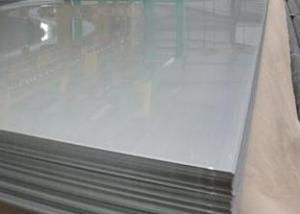Discovering Reinforced Bars for Structural Integrity
Reinforced bars, also known as rebar, are the unsung heroes of the construction world. They are the backbone of our buildings, bridges, and other infrastructure, providing strength and stability where concrete alone cannot. But how do we ensure that these bars are in place and performing their job effectively? Let’s dive into the world of rebar and explore the methods we use to discover and assess their structural integrity.
The Invisible Backbone
Rebar is often hidden from sight, embedded within the concrete. It’s not glamorous, but it’s crucial. Imagine a world without rebar; our structures would be at the mercy of the elements, prone to collapse under their own weight or the stress of everyday use. Rebar provides tensile strength, allowing concrete to withstand forces that would otherwise cause it to crack or break.
The Journey Begins: Casting the Concrete
The process of incorporating rebar into a structure begins with casting the concrete. Workers carefully place the bars into the formwork, ensuring they are positioned correctly and securely. This is a delicate process, as any misplacement can compromise the integrity of the final structure. Once the bars are in place, the concrete is poured around them, binding the rebar and concrete together into a single, strong unit.
Quality Control: Ensuring the Right Materials
Quality control is a critical aspect of rebar usage. The bars must be made from high-quality steel and meet specific standards to ensure they can handle the stresses they will be subjected to. Regular inspections and tests are conducted to verify the strength and durability of the rebar. This is not just a one-time check; it’s an ongoing process to ensure that every batch of rebar is up to par.
Non-Destructive Testing: A Key Tool for Assessment
One of the most valuable tools in assessing the structural integrity of rebar is non-destructive testing (NDT). This method allows us to examine the rebar without causing any damage to the structure itself. Techniques such as ultrasonic testing, magnetic particle inspection, and radiographic testing are used to identify any flaws or weaknesses in the rebar. These tests provide a detailed picture of the rebar’s condition, allowing engineers to make informed decisions about repairs or replacements.
The Role of Technology in Rebar Detection
Technology has revolutionized the way we detect and assess rebar. Advanced imaging techniques, such as ground-penetrating radar (GPR) and X-ray fluorescence, can locate rebar within a structure and determine its condition without the need for invasive procedures. These technologies are particularly useful in older structures where traditional methods may not be feasible or safe.
Maintenance and Repair: The Ongoing Battle for Integrity
Even with the best quality control and testing methods, rebar can still degrade over time due to environmental factors or stress. Regular maintenance and inspections are essential to identify any signs of corrosion or damage. When issues are detected, repairs can be made to prevent further deterioration and ensure the continued safety and integrity of the structure.
The Human Element: Skill and Expertise
While technology plays a significant role in the discovery and assessment of rebar, the human element is still crucial. Skilled engineers, technicians, and construction workers are needed to interpret the data from NDT and make decisions about how to proceed. Their expertise and experience are invaluable in ensuring that rebar is used effectively and that structures remain safe and sound.
The Future of Rebar: Innovation and Sustainability
As we look to the future, the role of rebar in construction is likely to evolve. Innovations in material science may lead to new types of rebar that are stronger, more durable, or even self-healing. Additionally, there is a growing focus on sustainability in construction, which may influence the way rebar is produced and used. The goal is to create structures that are not only strong and safe but also environmentally friendly and long-lasting.
In Conclusion
Reinforced bars are a vital component of our built environment, and their discovery and assessment are critical to ensuring the structural integrity of our buildings and infrastructure. From the initial casting of concrete to the ongoing maintenance and repair, every step of the process is important. By combining the best of human expertise with advanced technology, we can ensure that rebar continues to play its essential role in our world, supporting the structures we rely on every day.

